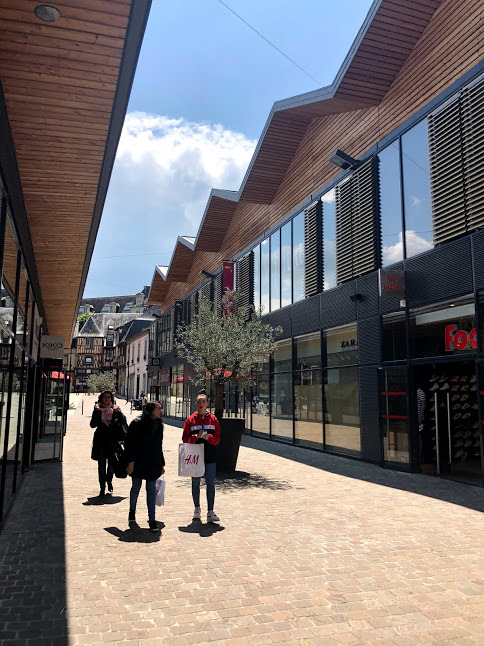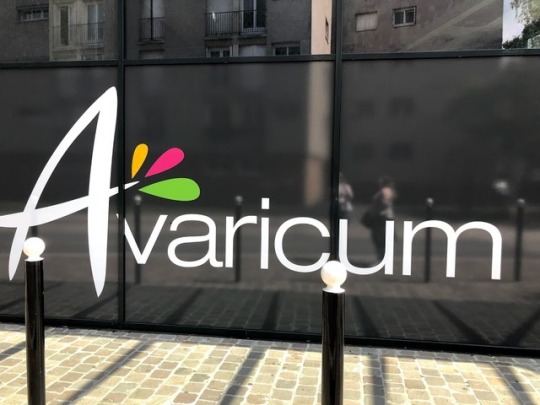#Avaricum
Photo
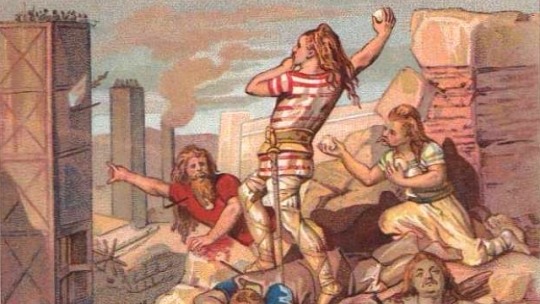
EXPRESSION | Porter les armes de Bourges ➽ https://bit.ly/3xYkzUv Être ignorant. Ces armes, comme tout le monde sait, se composaient d’un âne assis dans un fauteuil. L’origine de ce singulier emblème remonte à l’invasion de la Gaule par les Romains
#expression#armes#Bourges#ignorance#siège#Avaricum#Romains#Gaulois#Asinius#âne#fauteuil#étymologie#racines#langue#française#français#linguistes#lexicologie#lexicologues#usage
4 notes
·
View notes
Text
Changement de direction chez Avaricum, deux sociétés du Cher en liquidation judiciaire, rebond du Covid... Ce qu'il faut savoir ce matin
Changement de direction chez Avaricum, deux sociétés du Cher en liquidation judiciaire, rebond du Covid… Ce qu’il faut savoir ce matin
Le conseil départemental du Cher a décidé de reprendre la couche d’usure sur un tronçon de la RD2076. Un chantier qui dure douze jours et qui a un impact sur le trafic. Explications.
Rémy Pointereau, sénateur Les Républicains du Cher : “Nous serons une opposition raisonnable, apaisée, mais sans concession”
Début octobre, les débats parlementaires reviennent dans les demi-cycles. Outre le…
View On WordPress
0 notes
Note
So I have no clue if you're the right person to ask about this BUT - do you maybe have a site remembered that like ... showed you how long it would have taken to travel in europe at a certain point in history? I think i remember seeing a post about such a site but I can't find it now ^^' thanks in advance!
I have no clue, lol! I don't think it was me.
But, using my handy-dandy google-fu skills, I have come up with this for the Roman Era:
https://orbis.stanford.edu/
A quick screenshot shows us this interface:

This shows roman roads for horse and foot, and various sea and river routes by boat. it gives you the season in which you depart, and various locations across much of Europe and far northern Africa.
Even better yet, it gives you the following options for types of travel:
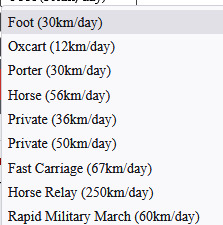
All of these can be extrapolated for later eras, up until the industrial revolution. There are even more fiddly bits to check and test, and while it's basically limited to Ancient Roman Empire locations for point-to-point travel, medieval Europe wasn't too badly off in terms of roads. They did have many of those old roads to walk upon, and for the poorer non-Roman-built roads, just add a bit more time for good weather, and a lot more time (especially in rainy seasons) for bad weather.
For some locations, if you're traveling by boat, it doesn't change much whatever the season is, but the farther you have to go, the longer it will take--to go from Londinium to Egypt would take around 50-55 days in the summer, versus 70-75 days in the winter, for example, versus Londinium to Avaricum (all by boat, via sea and river) which is only about 25 days, regardless of the season.
Good roads really don't get established until you have a solid population base that bands together to make good roads (aka enough commerce requires it, enough complaints are made about road conditions to motivate people into doing something about it)... and/or a solid government base upon which to organize, fund, and conduct infrastructure projects (the Roman Empire was all about its infrastructure, roadways, messenger relays, aqueducts for water, sewage systems for getting rid of waste, etc).
Prior to the advent of railways, boats were the fastest way to travel, followed by horses & forced marches (military marches), followed by just hoofin' it on your own two feet, etc. Literally for thousands of years, the only thing slowing people down was whether or not they had roads, rivers, boats, and/or beasts of burden to transport themselves and/or their goods.
If you're trying to estimate travel time in the Incan Empire, for example, a llama could carry up to about 100 pounds (under 50kg), but not a person, and there wasn't much in the way of wheeled carts, so all travel would still be done by foot, and considered as if done by foot. China definitely had the wheel early on (heck, they had the wheelbarrow long before Europeans did!), so they would have been able to haul goods and/or people much earlier in history...but the more weight that is being hauled, the slower the animals will go, or the more animals will be needed to pull a particular load.
I know that's not a full answer by any means, but at least it's a start!
49 notes
·
View notes
Photo
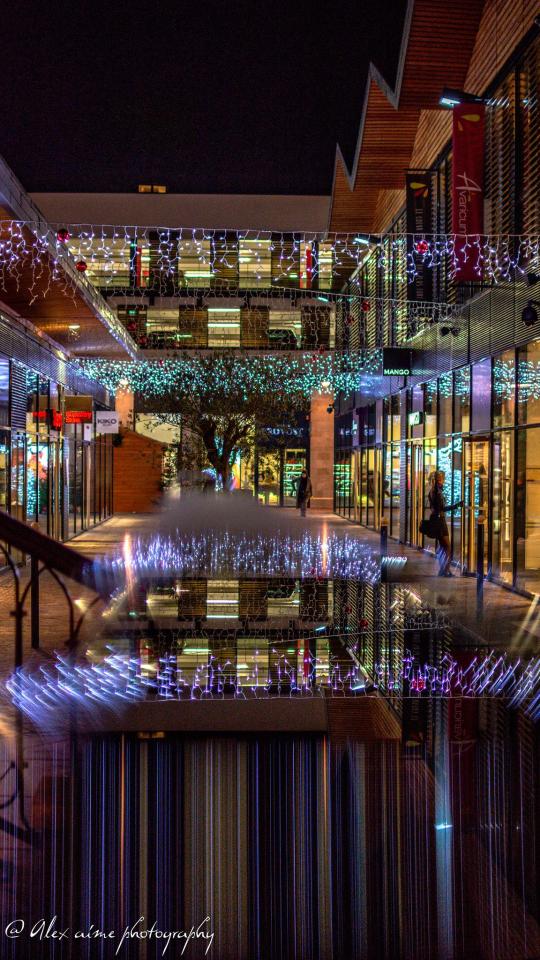
Street bokeh (Avaricum, Bourges, France )
27 notes
·
View notes
Text
Avaricum

Il ne restait plus rien de la prestigieuse cité gauloise. Les arbres avaient poussé laissant le lieu méconnaissable. Par endroit, les routes, les chemins subsistaient toujours dans cette forêt encore jeune. C’était il y a trente ans.
Il voulait revoir son oppidum natal, Avaricum. La cité imprenable, la perle des Gaules. Elle était si belle que son peuple refusa de la détruire devant l’avancée des légions romaines. Partout le pays connut la terre-brulée ; aucun grain de blé ne put nourrir la moindre bouche romaine, aucune maison ne put accueillir le moindre soldat. Les chefs décidèrent d’expulser l’envahisseur par n’importe quel moyen au risque de faire mourir le peuple de faim et de froid. C’était il y a trente ans.
Il était jeune et beau. Il avait décidé de suivre son brenn dans la plus grande aventure de l’histoire des Gaules. Il était encore jeune mais combattit vaillamment ces légionnaires organisés, trop méthodiques pour respecter son ennemi. Il tua des soldats durant des batailles dignes des guérillas. Il fut fier de ses premières têtes tranchées et exhibées sur la selle de son cheval. Le guerrier se montra grand et fort mais il avait une faiblesse. Ils s’aimaient depuis leur jeunesse. Elle, la petite fille d’un simple villageois. Elle qui, chaque matin, partait chercher l’eau à la fontaine. Elle qui l’embrassa un soir de Samain, la nuit des morts. Etait-ce un présage ? Il avança entre les arbres, parvenant aux restes d’un lac. Il se souvint en reconnaissant l’endroit qu’ils étaient venus une nuit de pleine lune. Il voyait son fantôme nu caché derrière un voile blanc marcher en direction du lac. Il suivit ce spectre dont la beauté l’avait fasciné dès le premier jour. Il était entièrement nu, derrière elle. Elle approcha lentement au bord et commença à entrer dans l’eau tout en le défiant d’en faire autant. Il n’osa pas car le lac était sacré. Toutefois, ne remarquant aucune autre présence, il décida de la rejoindre. L’eau était froide mais supportable. Il gigota un peu pour se réchauffer et commença à nager à son côté. Debout sur le bord du lac, il revit son âme danser dans l’eau avec la sienne. Puis ils revinrent se sécher sur le tapis de feuilles recouvrant la mousse au pied des arbres. Le guerrier se mit à pleurer en repensant à leur première fois à cet endroit, leur lieu secret. Mais était-ce une malédiction ?
Ensuite, le fantôme de la jeune femme reprit son chemin entre les arbres. Elle était toujours nue, contrairement à ses souvenirs. Généralement, il la ramenait chez elle sur son cheval pour la déposer devant sa porte après l’avoir embrassée. Il suivit le spectre blanchi par son voile qui traversa les restes d’une palissade. Il reconnut les portes d’Avaricum. La ville était en feu, les gens couraient dans la panique pourchassés par des milliers de romains en furie. Les vieillards, les femmes et les enfants furent égorgés, massacrés, les fantômes réapparurent au passage de la jeune femme. Il vit comment des soldats crucifièrent un vieillard et sa femme. Comment une petite fille fut violée par d’autres légionnaires déchainés. Il vit une chaumière prendre feu avec une famille dedans. Mais où étaient les hommes ? Ou étaient les guerriers ? Il sentit l’humiliation le dominer car il était avec eux, la majorité des hommes étaient partis. Cependant la poignée de soldats restée défendit la forteresse bec et ongles, détruisant les tours de siège ainsi que les fortifications. Mais leur persévérance à retarder l’inévitable fut à l’origine du massacre.
Elle traversa la ville en proie aux flammes, il suivait toujours, marchant dans un ruisseau de sang. Chaque maison, chaque coin de rue fut l’occasion de voir une scène terrible. Elle continua de marcher, traversant entièrement la cité. Après franchir une nouvelle porte, elle retourna dans une seconde forêt, la plus vieille, celle qu’il connaissait bien car les druides organisaient des fêtes. Elle marcha silencieusement, ses bras dansaient faisant flotter son voile derrière son dos tout en recouvrant légèrement ses fesses. Soudain, elle stoppa sa marche, s’agenouillant comme pour prier. Il vit alors, l’inimaginable : Il était au milieu de milliers de fantômes dans la même position, tous nus, attendant qu’on les amène par petits groupes. Il vit au loin, les premiers groupes obligés de s’agenouiller au bord d’un précipice. Derrière chacun d’eux, un légionnaire armé d’une épée attendait un ordre : Celui d’égorger un condamné ! Les corps disparurent en tombant remplacés par d’autres amenés à la chaine. Il la regarda, réalisant qu’elle souriait. Elle attendait tranquillement pendant que les autres étaient massacrés. Puis ce fut son tour. Elle s’est levée, bousculée par son futur bourreau. Elle avança jusqu’à la falaise et attendit en fermant les yeux. Le soldat l’attrapa par les cheveux d’une main tandis que l’autre enfonçait l’arme tranchante dans sa gorge faisant jaillir un large filet de sang. Il sut qu’elle avait pensé à lui à ce moment. Elle avait prié pour qu’il vienne. C’était il y a trente à Avaricum.
En voyant le corps du fantôme tomber, il ne put empêcher un sanglot. Il voulut la prendre dans ses bras mais en descendant, il découvrit qu’il n’y avait plus de corps, seulement des os dispersés un peu partout. Certains étaient à moitié enterrés, d’autres visibles. Il devina qu’ils étaient encore plus nombreux sous terre. Il venait de découvrir les restes des habitants d’Avaricum.
Après Alésia, il partit en Germanie devenant mercenaire pour quelques chefs fortunés. Il devint renommé, apprécié pour ses actes de bravoure et fut surtout craint par ses ennemis. Il regretta de n’avoir jamais pu tuer ce Jules César qui ordonna le siège de sa cité natale. Il regretta de ne pas avoir été auprès d’elle ce jour. C’était il y a trente ans et maintenant il avait besoin de la revoir pour lui demander pardon. Elle avait répondu et pardonné.
Alex@r60 – octobre 2019
13 notes
·
View notes
Photo

Inventario: 01453
Clasificación Genérica: Platería
Objeto/Documento: Taza
Título: Taza Aldobrandini o Taza de Julio César
Materia/Soporte: Plata
Técnica: Fundido
Moldeado
Cincelado
Dorado
Dimensiones: Altura = 45 cm; Diámetro máximo = 37 cm
Figura: Altura = 16 cm
Pie: Diámetro = 18 cm
Descripción: Plato levemente cóncavo que adorna la moldura del borde con un motivo de círculos montados; en el campo, dividido en cuatro secciones separadas por columnas, se representan: el sitio de Avaricum, el paso del Rubicón, la batalla de Farsalia y la entrada triunfal de Julio César en Roma. Un pequeño asiento moldurado donde se levanta un pedestal cilíndrico con espejos convexos verticales y moldura con adorno radial en que descansa la estatuilla de Julio César laureado con traje militar, la siniestra en la espalda y la diestra con una albarda, con el rostro apenas desviado a su izquierda. Por debajo del plato, una cubierta, cuerpo bulboso con cartelas, arandela moldurada y escocia lisa; nudo de jarrón con cuatro cabezas cornudas de viejos y leones alternadas con festones de frutos entre ellas, y otro par de molduras entre escocias. Pie circular con cuerpo troncocónico con frutos, una zona de perfil convexo con mascarones entre frutos y otra mayor con cuatro cabezas de león, carnero y velada con frutos para acabar en peana levemente escalonada.
Iconografía: Retrato; El paso del Rubicón; La Batalla de Farsalia; Entrada triunfal de César en Roma; El Sitio del Avaricum
Inscripciones/Leyendas: En el pedestal:
IVLIVS [Burilada corta e imprecisa en el reverso del plato. Incisos los números 1,2,3,4 en el centro de la modura de la orilla, sobre cada escena. Inscripción: ver descripción.]
Firmas/Marcas/Etiquetas: Alero y parte central del plato, capa de Julio César, reborde del pie
Marcas francesas: [Entre ellas, la cabeza de jabalí, correspondiente al París y empleada a partir de 1838, y el gorgojo, punzón de exportación empleado a partir de 1864]
Datación: 1587-1599 (Figura y plato)
1851=1900 (Pie)
Contexto Cultural/Estilo: Renacimiento
Lugar de Producción/Ceca: Países Bajos [Probablemente]
Uso/función: Adorno de mesa
Clasificación Razonada: Esta taza forma parte de un juego de doce dedicadas a los llamados doce Césares, según la obra "De vita Caesarum" de Cayo Suetonio (hacia 69-140) en que se inspira para los protagonistas y los acontecimientos narrados. La pieza del Museo Lázaro Galdiano es la primera de la serie, pues está dedicada a Julio César, como lo muestra el nombre inscrito en el pedestal y los episodios representados, donde aparecen detalles concretos narrados por Suetonio, como el gigante que tocaba la flauta antes de que César pasara el Rubicón, el enfrentamiento con la caballería de Pompeyo en Farsalia, el sitio del Avaricum y la entrada triunfal de César en Roma con los elefantes.
Estudios recientes parecen confirmar que esta taza y el resto del conjunto se realizaron en los Paises Bajos entre 1588 y 1599. Su artífice, tal vez, fuera un platero nórdico, alemán o flamenco.
Relación del conjunto en su paradero actual (2017):
- Julio César: Museo Lázaro Gladiano, Madrid.
- Augusto: Institute of Arts, Minneapolis (figura); Colección Selim Zilkha, Los Angeles (plato)
- Tiberio: Colección privada (figura); Victoria and Albert Museum, Londres (plato)
- Calígula: Colección Bruno Schroder, Londres (figura); Fundaçao Medeiros e Almeida, Lisboa (plato)
- Claudio: Colección privada (depositada desde 1999 en el Metropolitam Museum, Nueva York)
- Nerón: Colección Selim Zilkha, Los Angeles (figura); Colección privada (plato).
- Galba: Fundaçao Medeiros e Almeida, Lisboa (figura); Colección Bruno Schroder, Londres (plato)
- Otón: Royal Ontario Museum, Toronto.
- Vitelio: Metropolitan Museum, Nueva York.
- Vespasiano: Koopman Rare Art, Londres
- Tito: Colección privada, reproducción de la figura; Museo Nacional de Arte Antiga, Lisboa (plato)
- Domiciano: Victoria and Albert Museum, Londres (figura); The Minneapolis Institute of Arts, Minneapolis (plato)
[La taza de Tiberio, con el plato de Nerón, de colección privada, está depositada en el Metropolitam Museum de Nueva York desde 1999]
Forma de Ingreso: Donación al Estado
Información del Museo Lázaro Galdiano, en la web Colecciones en Red.
0 notes
Text
MIDZUKI Shibata CV
An art experimenter / Based in Tokyo.
As I had the experience of "imagine the inside" through lessons of Kendo and Chado, I had worked on making "gaze" visible, but I gradually became interested in "pot" as a form of imagining the contents and worked on "pot" as an object to admire. In recent years, under the theme of "Why Do Humans Form Pots(Vessels)?" I have repeatedly used daily items to "make a pot". The main materials are the soil of the place I visited and the waste generated in my life, and I selects those materials in order to get the initial action of "make" from where I am/where I was.
/About
1987 Born in Tokyo, Japan.
2011 BFA, Tokyo National University of Fine Arts and Music, Oil painting course.
2014 MFA, Tokyo National University of Fine Arts and Music, Oil painting course.
2015-2016 Residency of Cité Internationale des Arts, Paris.
2017-2018 Learning as exchange at Beaux-Arts de Paris.
2019 PhD of Art, Tokyo National University of Fine Arts and Music.
/Prize
2019 The mayor of Minakami Prize
2019 Winning the 2nd International Art Exhibition in Makurazaki Prize
2017 Kan-hikari Arts prize
2016 GEIDAIxMARUNOUCHI Arts Prize
2015 Supported by Japan Arts Foundation
2015 Scholar of Ishibashi Foundation for Traveling Scholarship Program of Geidai
2014 Winning the Takahashi Geiyu-kai prize
2011 Winning the Mr.O prize
2008 Winning the Keiichiro Kume prize
/Public Collection
The University Art Museum / GEIDAI, Tokyo, Japan
Minakami Collection / Gunma prefecture, Japan
Maison de Japon(in the maison de japon president's room)/Cité Universitaire, Paris
/Solo Exhibition
2022 <WOODS> VIENTO ARTS GALLERY/ Gunma, Japan
2020 <POTS> RISE Gallery / Tokyo, Japan
2019 <Mizuki Shibata Solo exhibition> iGallery DC / Yamanashi, Japan
2018 <Perception> Ai Gallery / Tokyo, Japan
2018 Small exhibition<Objet -les petit pot-> galerie Ichi-gatsu to Shichi-gatsu / Paris, France
2016 <VISIBLE/IMVISIBLE/LESS-VISIBLE> City des arts Paris / Paris, Tokyo
2013 <MIRU TSUBO> SUZUYA Draper's shop / Tokyo, Japan
2010 <Experiments> Open Studio&Gallery SUZULOHAKO / Tokyo, Japan
2009 < trim.> HIMAWARI Garden / Tokyo, Japan
/Group Exhibitions & Works
2021 <Phantom/Phantasmagoria> Masaki kinen-kan / Tokyo, Japan
2021 <Nakanojo Biennale 2021> Akaiwa-village(Gunma), Japan
2021 <Onirism Collectif #7> zoom / online event
2019 <Nakanojo Biennale 2019> Akaiwa-village(Gunma), Japan
2019 <Espace de Réflexion> Spiral / Tokyo, Japan
2018 <Doctoral Program Final Exhibition 2018 - Tokyo University of the Arts> The University Arts Museum / Tokyo, Japan
2018 <KAN-HIKARI ART EXPO 2018 KYOTO・KAMAKURA ~結 musubi~> Sennyu-ji / Kyoto, Japan
2018 <Esprit es-tu là?> Design Festa Gallery / Tokyo, Japan
2018 <Obi vol.04 - Shoei Dormitory Stories> Shoei Dormitory / Kyoto, Japan
2018 <Mutual Grounds> Galerie Droite / Paris,France
2018 <Le Flash> Gallery Droite et Gauche / Paris, France
2017 <La tête en fumet> Maison du Japon / Paris, France
<Gakugei University Ishii Lab×Paris Beaux-Arts Tadashi Kawamata
Atelier[workshop:white]> Cour Vitrée du Palais des études / Paris, France
<PRIMITIVE ACT」Gakusei-Kaikan / Tokyo, Japan
2017 ZHdK×GEIDAI project <Moving Perception in Tokyo> Yuga Gallery / Tokyo, Japan
2016 <depositors meeting 14> art & rever bank / Tokyo, Japan
<PLACES> Kunstverein Jahnstrasse e.V. / Braunschweig, Germany
<Student Arts marathon> blanClass / Yokohama, Japan
<Art in Yujuku> Minakami onsen village / Gunma, Japan
<upward view> project room of Geidai / Tokyo, Japan
<RUINES> Centre Commercial Avaricum / Bourges, France
2015 <ZHdK&GEIDAI - Half-open, Half-collapsed, Half-understood> Chinretsu kan / Tokyo, Japan
<Munster Academy&GEIDAI - A Guest + A Host = A Ghost> Tokyo University of the Arts / Tokyo, Japan
<Inner History> Ai Gallery / Tokyo, Japan
<OBI vol.02 -HIRAKU-> Obiya Sutematsu / Kyoto, Japan
<Yadokari Tokyo vol.15 - PRIMITIVE ACT> Itadaki BLD. / Tokyo, Japan
<One Corner and Space> Gallery Hakusen / Tokyo, Japan
2014 <The Power of Expression - Tokyo University of the Arts selection> Hiunkaku / Kagawa, Japan
<OBI vol.01> Yuga Gallery / Tokyo, Japan
2013 <Tokyo-ArtMeeting03-Arts and Music> The University Art Museum / Tokyo, Japan
<Self Portrait 4/12> Art Space1,2 / Tokyo, Japan
2012 <In the AIR at Harada rice shop> Harada rice shop / Chiba, Japan
<Open end / Open process> Tokyo University of the Art / Tokyo, Japan
2011 <Staring Eyes/Sly Eyes> [five shows a year] Yuga Gallery / Tokyo, Japan
<Spring Board2011> Ueno Break Station Gallery / Tokyo, Japan
<4th The Pyramid Scheme> RED CUBE Project Room / Tokyo, Japan
2010 <MACHI-NAKA Art University project - HOME ROOM> KOJIMA ART PLAZA / Tokyo, Japan
2009 <Embassy of France & Tokyo University of the Arts participates in the host project [No Man’s Land] MEMENTO VIVERE/MEMENTO FANTASMA> Embassy of France former building / Tokyo, Japan
<SUZULOHAKO Opuscule Exhibition> OpenStudio&Gallery SUZULOHAKO / Tokyo, Japan
<Yu-bi ‘09> Tower Hall FUNABORI / Chiba, Japan
<GEIDAI&QCA joint project - HASHI HASHI> QCA Gliffith Univ.The Galleria / Queensland, Arstraria
2008 <GEIDAI&QCA joint project - PLANET UENO> Old SAKAMOTO elementary school / Tokyo, Japan
<THE KUME PRIZE -2008-> Tokyo University of the Arts / Tokyo, Japan
0 notes
Text
Immochan France nomme Jamal Riffi directeur habitat et tertiaire
... des ensembles mixtes comme les Allées Provençales à Aix-en-Provence, le cour Avaricum à Bourges, le cour Oxygène, extension de la Part Dieu.
from Google Alert - la Part Dieu http://ift.tt/2lpEiVc
0 notes
Text
Put That City to the Sword: Julius Caesar Slaughters Avaricum, Feat. Neil Eckart - Roman History
Put That City to the Sword: Julius Caesar Slaughters Avaricum, Feat. Neil Eckart – Roman History
http://media.blubrry.com/deadideas/ia601407.us.archive.org/9/items/DeadIdeas108PuttingCitiesToTheSword/Dead%20Ideas%20108%20Putting%20Cities%20to%20the%20Sword.mp3
When was the last time you put a city to the sword? It’s not something we do much anymore today. Yet there was a day and age when it was quite normal to slaughter every last man, woman, and child in a captured city. Neil Eckart of the…
View On WordPress
0 notes
Video
vimeo
Au cœur d'un îlot urbain antique de Bourges-Avaricum, une cave au décor exceptionnel. (fouilles du service d'archéologie préventive de Bourges Plus)
0 notes
Photo

high gothic source: flaneurissimo
#saint-étienne#bourges#avaricum#bourges cathedral#gothic architecture#cher#religion#black and white#photographers on tumblr
67 notes
·
View notes
